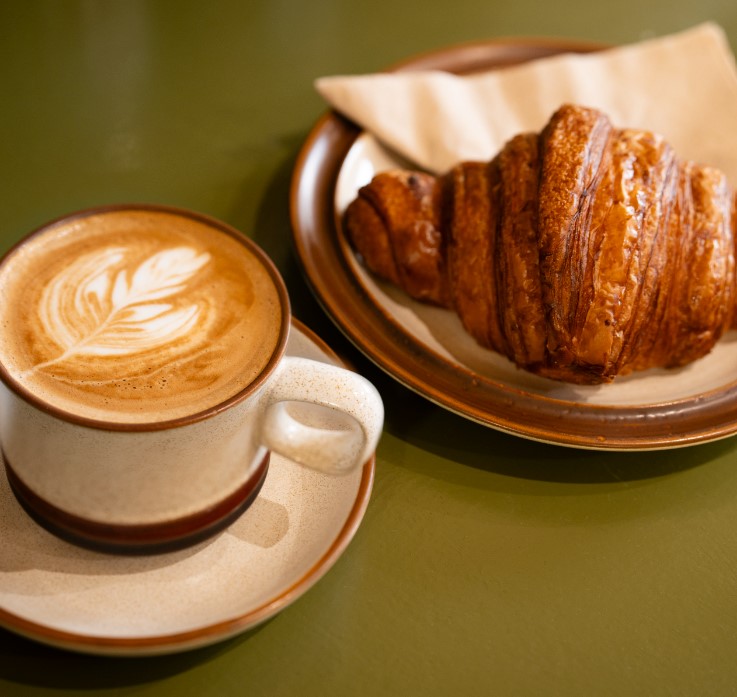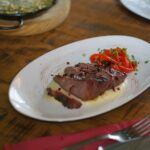
This article first appeared in the May/June 2025 edition of Style of Wight magazine. Words by Ginnie Taylor.
One of the most traded commodities, coffee is woven into the fabric of everyday life; it’s in our morning rituals, our social lives and our business meetings. It’s part of human history, with complex stories, flavours and rituals that reflect societies and cultures.
Like many trends, modern coffee culture took its time making its way across the Solent. Now though, it has well and truly arrived on the Isle of Wight. The island’s best cups of coffee have origins in Ethiopia, Brazil and Columbia, to name but a few.
Roasters talk of ‘cupping’ to assess coffee’s five elements – aroma, acidity, body, flavour and aftertaste. Coffee can be intense or muted, nutty, fruity or sweet. It can have floral, chocolate, vanilla, or buttery flavours, it can be full bodied or lacking in mouthfeel. And that’s just scratching the surface. The dedicated and discerning coffee taster might even consult a coffee flavour wheel, with a myriad of tastes and aromas defined by colour, to help them identify the elements in their cup.
The variations in bean, roast, brew and preparation show the complexity of coffee in its modern-day iterations. Likewise, the history of coffee has woven a complex tapestry; across the globe, lines of rich colours stretch between communities and continents, telling of long journeys and epic adventures, chequered by colonialism and still in constant change. Its fragrant, unmistakeable aroma and energy-giving attributes are part of shared memories, traditions and rituals that have been adapted across cultures.
In Turkey, fine grounds are used and those that settle at the bottom of the cup are read to tell fortunes. In Ethiopia, an elaborate coffee ceremony is conducted to honour friendship and respect. In Italy, coffee rituals vary according to the time of day; cappuccino is only to be imbibed with breakfast, macchiato post-lunch, and espresso follows dinner. Every culture has its own traditions, developed over the hundreds of years since coffee was discovered.
Coffee’s story began in the highlands of Ethiopia, the homeland of the Coffea arabica plant, which is believed to be the first species of coffee to have been cultivated. Though we refer to coffee ‘beans’, the plant is not a legume, but part of the Rubiaceae family of flowering plants, a shrub with fruits that are similar in appearance to cherries. Its natural populations grow in the forests of South Ethiopia and Yemen.
According to the legend first written down in 1671, coffee was discovered in the 9th century by Kaldi, an Ethiopian goat-herder who noticed his goats became unusually spirited after eating berries from a tree. The story goes that he introduced coffee to monks, who welcomed the elixir as a means to stay awake during nighttime vigils.
From its beginning as an aid to religious rituals, the humble bean was to travel seas and become embedded in cultures across the globe. Trading in coffee began on the Arabian Peninsula and by the 16th century, coffee houses could be found in Turkey, Iran and Syria. Coffee’s journey continued westward to Europe, and by the mid-17th century, there were hundreds of coffee houses in London, Holland and Germany. As appetite for coffee grew, so did the desire to grow coffee in other places and to profit from these endeavours. Colonisation played an undeniable part in the history of coffee; the Dutch first grew coffee seedlings in what is now Indonesia, on the island of Java, while Portuguese colonisers were responsible for the first coffee plantations in Brazil. The history of coffee is interwoven with that of geopolitical manoeuvring and change.
From bean to blend, to preparation, there is an abundance of choice, underpinned by long journeys, complicated history and cultural nuance. One thing is certain: there is an art to a good cup of coffee. Whether brewed at home or in a café, to make a good coffee is a ritualistic endeavour, and in every cup there is an anthropological history.






